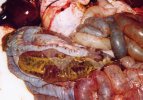
No swine dysentery? Challenges that mild strains of Brachyspira hyodysenteriae pose to the industry
What happens if the agent that causes swine dysentery is detected, but there is no disease? This is how can it be diagnosed and the consequences to the herd.






















